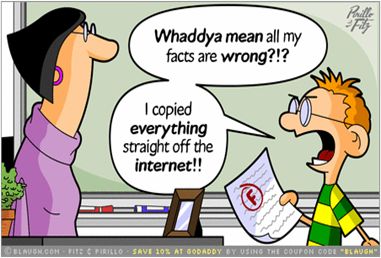How many times have you believed information seen or heard in the media and argued it was right and then come to find out that it was false?
Weebly. (ND). [Graphic illustration March 3rd, 2016]. Unit 5- Media literacy: The power of the media. Retrieved from
Media is prevalent everywhere in
our external environments and can be interpreted in many different ways. Mass
media influences ones development of characteristics and is widespread within
many readings, issues, videos and images presented in the classroom (Redmond,
2015). It is a way of portraying dominant knowledge and representing certain
issues, so I question if it is common sense. Media has a great influence on
thoughts, beliefs and worlds views and because of that, media literacy is an
important aspect of 21st century education. In order to teach individuals
how to view media by looking past the dominant common sense knowledge, media
literacy should be implemented. Media literacy is “the ability to access,
analyze, evaluate, and create texts in all forms” (Redmond, 2015, P. 10). The video below further explains the meaning and importance of media literacy.
As today’s society is growing in
the use of technology, it is important to target media within the class. Media
literacy could be taught implicitly through students searching Information and Communication Technologies (ICTS) to
emphasize and explore false beliefs that are advertised (Redmond, 2015).
Exploring false beliefs is important because it puts great emphasis and
connection on real world issues and concepts that are being taught with the
distortions of what media is showing or saying. By doing this, students can
become critical thinkers and advocate for change in society.
However, even though media
literacy is important within the classroom, many conflicting policies and
ideologies come into effect when implementing it. The Common Core State Standards (CCSS) is a text
that helps teachers implement media literacy within the classroom in order to
develop students who are 21st century literate (Redmond, 2015). However,
the No Child Left behind Act tires to promote equality within the class, but discourages and
comes into disagreement with print and non-print texts that try to encourage
media literacy, and critical thinkers (Redmond, 2015). The No Child Left behind
Act sets standards for narrowly focused testing, reading and writing, rather
than the exploration and interpretation of ones environments. Below are Category Example
Statements from Redmond (2015) findings that The
No Child Left behind Act fails to recognize and discourage. These statements emphasize
the importance of media literacy within the classroom.
“Integrated Model of
Literacy
✶
Using
images, sounds, and videos to communicate your ideas is important and it is
becoming a more and more important way of communicating (Travis, 1-1).
✶
..
.what media literacy tries to do, just like you do with actual literacy; we try
to break it down. We try to slow it down... (Tamara, I—1).
✶
Kids
have a way to talk about literature. It is a part of how we educate children.
But they never break it down or slow it down or talk about it for media. Media
kind of just happens to you (Tamara, 1-1).
Developmental Perspective
✶
This is
a perfect age because they're skeptical. They are shifting their ideas (Lisa,
1-1).
✶
We are
kind of trying to play catch up with the amount of stuff they see that is not
developmental^ appropriate (Tamara, I-1)
Socio-Cultural Perspective .
✶
You
really need to question what the ulterior motive is of pretty much any media
that's gonna come in your face (Tamara, 1-1)
✶
The
goal is for kids to become critical viewers of media, and, in that, critical
consumers (Tamara, i-1).
✶
The
first day we say "all media is constructed'' and it's constructed to
elicit... it's either after your money, power, or your emotion. There is
something that they want and they are going to contrive to get it in some way.
And [students] may go along for the ride and say: "That's great. I'm happy
to be entertained by that," or they may say: "But I know what you're
doing." And I think that's really what we want kids to end up with. Where
they say: "You know, that's an interesting thing you just did" (Lisa,
1-1)” (Redmond, 2015, P. 14).
In the end, media literacy has value and should
be understood as a way of integrated literacy, valuing students, and become
committed to new 21st century education and skills (Redmond, 2015).
As a student Judy from Redmond (2015) states, “We talk about stuff from
outside of school, sort of. We talk about the media and all the different brands
and how they put them in movies. We also talk about, like, celebrities, and
stuff like that— things that we can relate to or know a little bit more about
and are a little bit more interested in than, like, science or something.
(Judy, class discussion, 12/17/2010)(Redmond, 2015, P. 15). This quote
emphasizes, not only do teachers use media literacy to develop 21st century
literate students, but also students remember and enjoy media literacy within
the class as they can connect to it
References
Redmond, T. (2015). Media literacy is common
sense- Bridging common core standards with the media experiences of digital
learners. Middle School Journal.

No comments:
Post a Comment